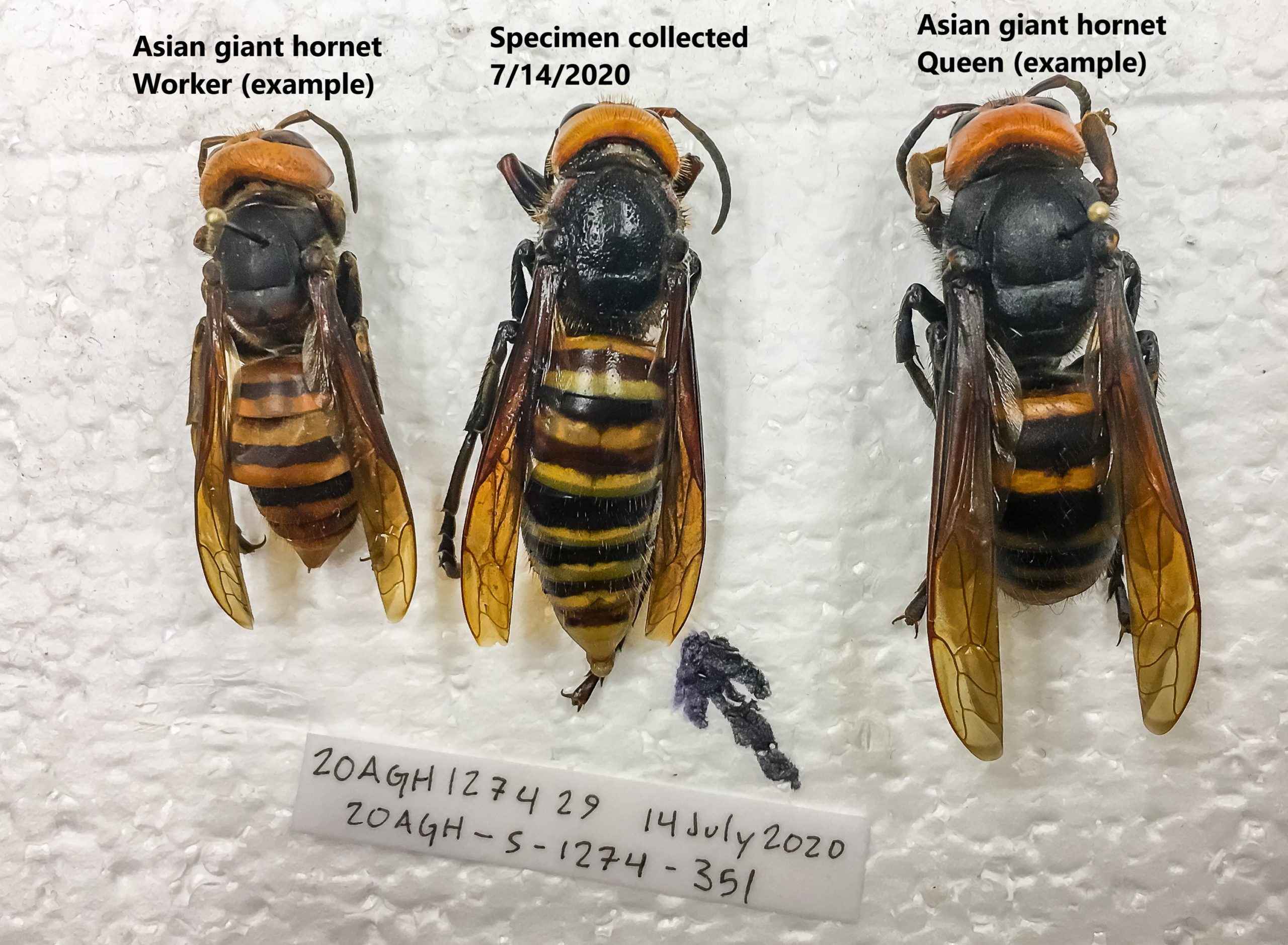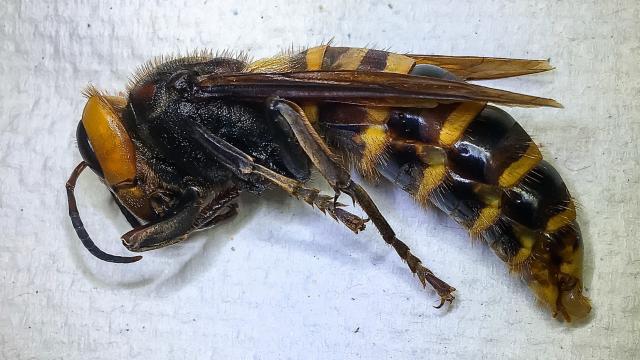The Washington State Department of Agriculture has successfully trapped its first Asian giant hornet, aka murder hornet aka 2-inch-long flying demon that rips off bees’ heads and haunts my nightmares.
The agency discovered the hornet in one of its traps near Birch Bay, Washington on July 14 and it was positively identified on July 29, the first specimen of its kind that wasn’t found in the wild.
“This is encouraging because it means we know that the traps work,” Sven Spichiger, the department’s managing entomologist, said in a Friday press release. “But it also means we have work to do.”
Because not only are these beasties potentially deadly to humans and considered an invasive species to boot, they’re New York Times.
Spichiger said in a press call that the agency’s struggling to figure out if the specimen they caught is a worker or a queen, since it’s kind of in-between the two in terms of size.
He’s leaning toward it being a worker, but you can judge for yourself in the side-by-side below (obvious trigger warning because holy hell these things are scary looking):

Now that they know the traps work, WSDA’s planning to start searching for nests using infrared cameras in the hopes of catching live specimens and equipping them with trackers. Then, it’s just a matter of following them back to their nest and… bam! No more murder hornets.
The agency aims to find and destroy a nest by mid-September, before the colony enters the next stage of its life cycle and creates new queens that would mate and spread the invasive species even further. At the same time, they’re proceeding cautiously, because these things are no joke. Asian giant hornets kill up to 50 people in Japan every year, and their stings hurt. And I mean, really hurt. One Vancouver Island man who was stung said it felt like red-hot thumbtacks had been stuck into his leg, and that he had “throbbing muscular aches” in his legs even into the next day.
“It’s a little sketchy when you’re donning the almost inch thick hornet suit, and it’s July out, and of course you’re a little nervous,” Spichiger in the press call.
According to the press release, WSDA officials aren’t the only heroes braving it in the war against murder hornets either. In addition to the hundreds of traps the agency’s set, citizen scientists and other cooperators have joined the fight and placed over 1,300 home-made traps in the effort to eradicate these pests.
“We’re hoping this is the only one we find for the year, but we have a lot of traps out, and that should help us make sure that we cover the area and take care of any problems,” Spichiger said.
Anyone interested is encouraged to build and set their own traps for the hornets too, as well as report sightings on the WSDA’s website. Remember though: These things can be deadly, so if you see one, maybe just snap a pic? And leave the murder hornet wrangling to the professionals.
